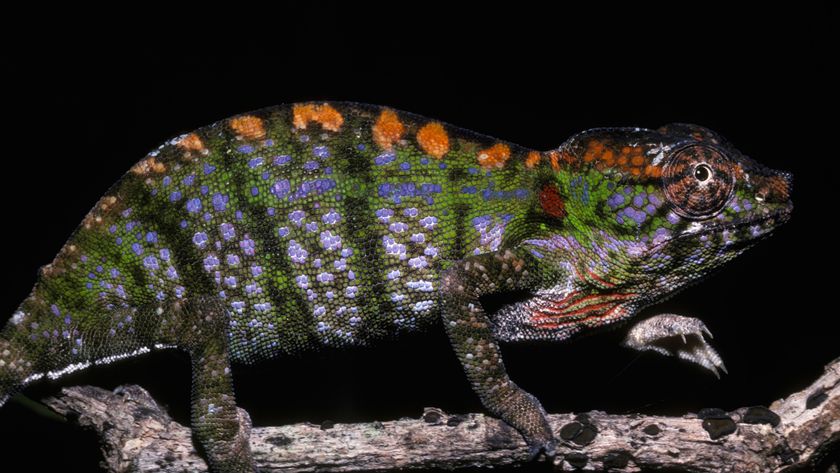
Monitor Lizard Discovered with Flame-Colored Head

A distinctly colored species of monitor lizard, a close relative of the Komodo dragon, has been discovered in Indonesia.
The lizard, whose scientific name is Varanus obor, is also called by its popular names, Torch monitor and Sago monitor. It's called Torch monitor because of its bright orange head with a glossy black body. "Obor" means torch in Indonesian.
The newfound lizard is a close relative of the intimidating Komodo dragon, as well as the fruit-eating monitor lizard recently reported from the Philippines.
The Torch monitor can grow to nearly 4 feet (1.2 meters) in length and 3.5 pounds (1.5 kilograms) in weight, and thrives on a diet of small animals and carrion.
The Torch monitor exists only on the small island of Sanana in the western Moluccan islands of Indonesia. A unique aspect of this geographical region is the lack of mammalian predators, which may have given reptiles the space to evolve as the top terrestrial predators and scavengers.
Several million years ago, this island was situated near New Guinea, and it is possible that the lizard lives on as a relic from that period. It is the only black monitor in its lineage, and the only monitor species anywhere that has evolved red pigmentation.
The newly discovered species was described by Sam Sweet, an ecologist at the University of California, Santa Barbara, and Valter Weijola, a graduate student at Abo Akademi University in Turku, Finland, on April 23 in an online issue of the journal Zootaxa.
Sign up for the Live Science daily newsletter now
Get the world’s most fascinating discoveries delivered straight to your inbox.
Sweet, an authority on monitor lizards describes the discovery's important biological context in the area in which it was found: "East of Wallace's Line –– the boundary between Asian and Australian domains –– there are no native carnivorous mammals, and monitor lizards fill that role. There are more species there, doing more different things ecologically than in Africa or South and Southeast Asia, where competition and predation by mammals tend to keep monitor lizards down," Sweet said.
"East of Wallace's Line in Indonesia, New Guinea, and Australia, monitor lizards are on the top of the heap. It emphasizes again how little we know about some tropical regions, to find an animal so strikingly colored and so large only last year."
Weijola discovered the lizard last spring, and returned with Sweet in late 2009 for five weeks to do studies and take photographs of the animal. The Torch monitor is most common in the coastal sago palm swamps and belongs to the mangrove monitor group.
- Images: Snakes, Frogs and Lizards
- Giant Lizard Eluded Science, Until Now
- Lizard News, Images and Information













